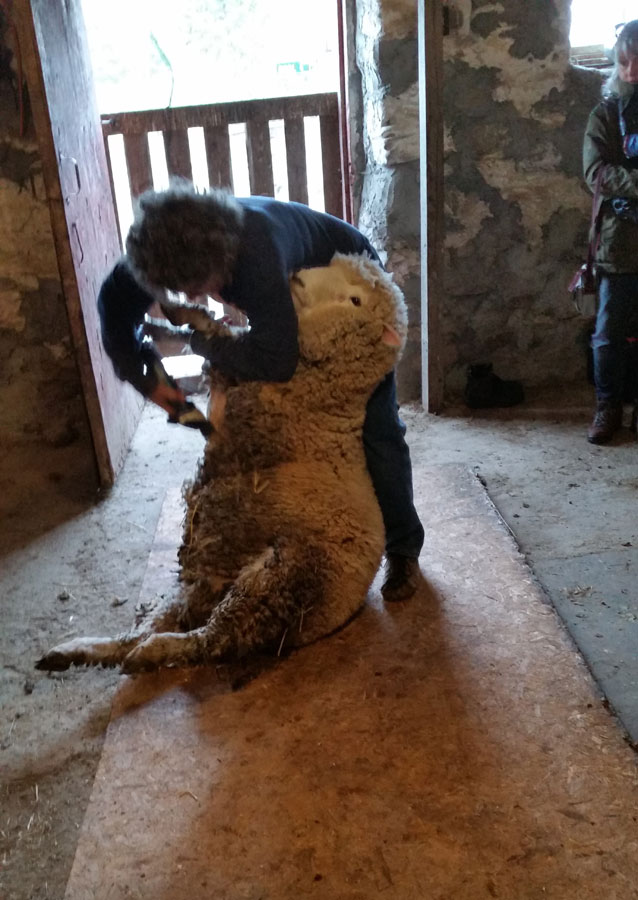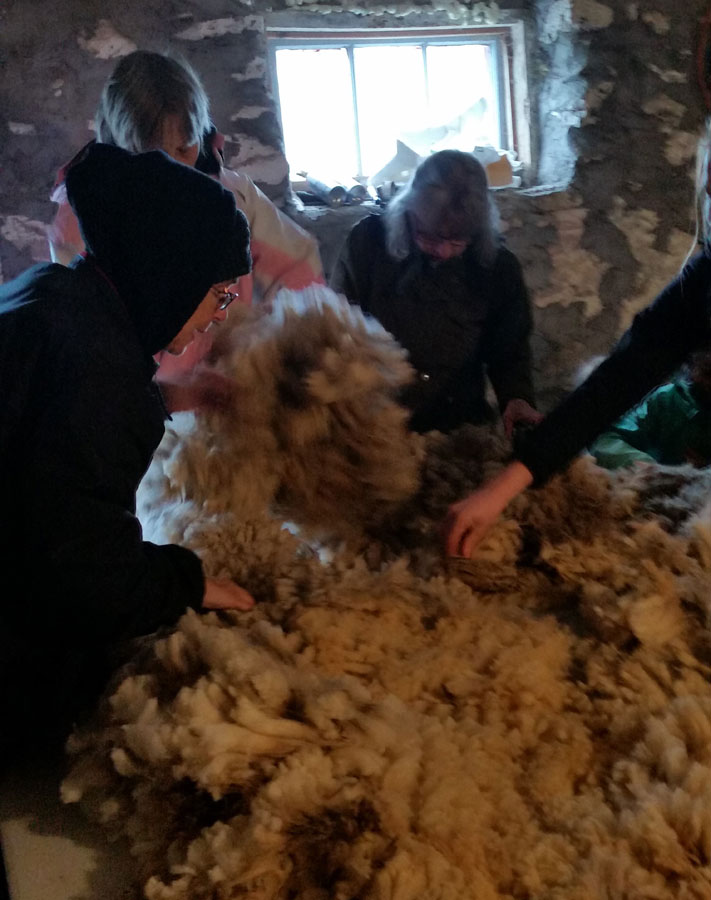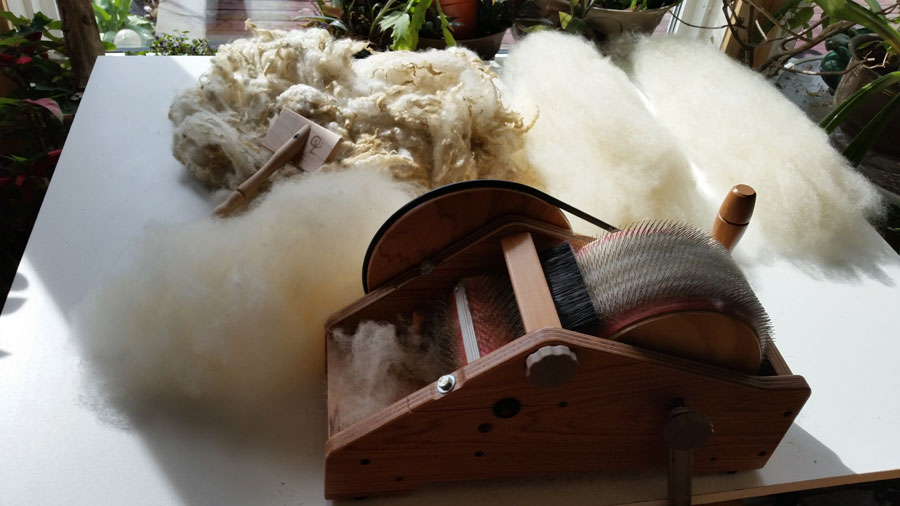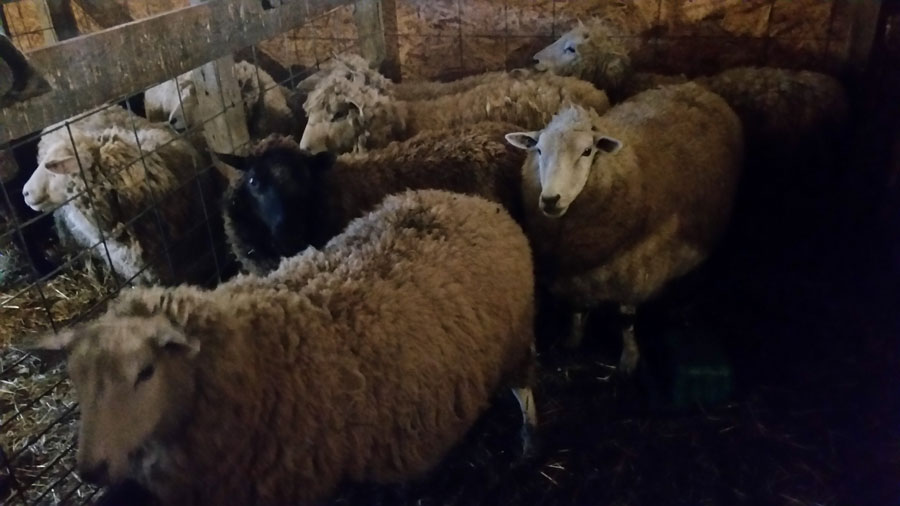I have gained a new appreciation for those who take raw wool to cleaned fleece!
 April 2017, Lanes End Farm, sitting around the kitchen table with sheep farmer Lynn….waiting for the shearer. At her farm she invites those interested in the shearing process to participate in the spring shearing. There were about twelve of us excitedly awaiting the arrival of the shearer. Even with the cold, rainy weather there was a typical warm welcome. The table was set for coffee and tea with lots of introductions and conversation. This year’s shearing of Lynn’s small flock would be my second experience with shearing.
April 2017, Lanes End Farm, sitting around the kitchen table with sheep farmer Lynn….waiting for the shearer. At her farm she invites those interested in the shearing process to participate in the spring shearing. There were about twelve of us excitedly awaiting the arrival of the shearer. Even with the cold, rainy weather there was a typical warm welcome. The table was set for coffee and tea with lots of introductions and conversation. This year’s shearing of Lynn’s small flock would be my second experience with shearing.
In Prince Edward Island we had a forty acre farm with two sheep, whom I identified as George and Gracie on the Canada Farm Census. They had been sheared by a neighbour, Ralph, using non-electrical hand shears. I learned how to set the sheep on their bottoms so they could be safely sheared. Also, where to start and how close to the skin to cut so as not to injure the sheep.
 But, today there was a professional shearer who sheared so quickly it took a team just to keep up with her. We were each given certain tasks to assist in the process. There were those who managed the pens moving each sheep to the shearing station, those who helped hold the sheep and others who gathered the sheared fleece. Then others who were “skirting”, bagging and labeling the fleece. As we skirted or pulled off the dirty lower parts of the fleece we were also looking for fleece that we might like to purchase. I put my name on several bags of black and white fleece for a new product I had in mind. I had researched a traditional Irish style raw wool rug and was keen to try weaving some for the market.
But, today there was a professional shearer who sheared so quickly it took a team just to keep up with her. We were each given certain tasks to assist in the process. There were those who managed the pens moving each sheep to the shearing station, those who helped hold the sheep and others who gathered the sheared fleece. Then others who were “skirting”, bagging and labeling the fleece. As we skirted or pulled off the dirty lower parts of the fleece we were also looking for fleece that we might like to purchase. I put my name on several bags of black and white fleece for a new product I had in mind. I had researched a traditional Irish style raw wool rug and was keen to try weaving some for the market.
 But first, home with my five bags of wool. Washing was the first step. Each fleece needed to be washed by hand in a large tub of very hot water and soap. Wash and repeat…three times or until the water was mainly clear; then rinse, rinse and rinse again. Did I mention this was April, 2017? That cold rainy April! And this washing and rinsing had to be done outdoors.
But first, home with my five bags of wool. Washing was the first step. Each fleece needed to be washed by hand in a large tub of very hot water and soap. Wash and repeat…three times or until the water was mainly clear; then rinse, rinse and rinse again. Did I mention this was April, 2017? That cold rainy April! And this washing and rinsing had to be done outdoors.
Then came the drying. The fleece was spread on two large screens. When there was sun it was outside and when the rain came back, the screens were moved indoors and placed over the bath tub. This process took eight hours per fleece plus drying. Then came the carding.
Having received a small carder for my birthday I was anxious to put it to use. The carder actually combs the fleece, locks and arranges the wool fibres evenly and parallel. My three year old grandson “helped” with this part, as he is curious about the mechanics of all my machines. Carding took the washed fleece and turned it into light, fluffy batts of wool ready to weave into the natural wool rugs. I was very pleased with the final product, and with the journey from fleece to floor!



